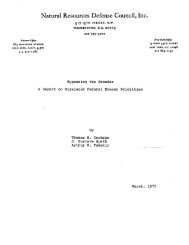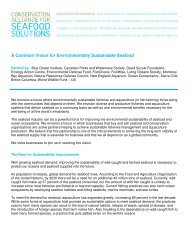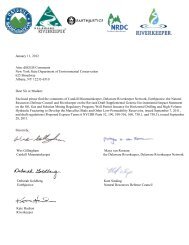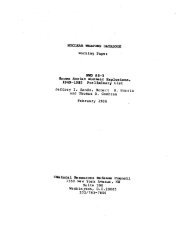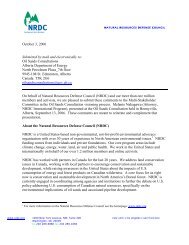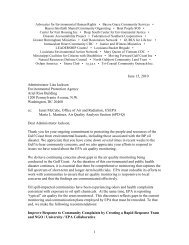3. Nuclear weapons - NRDC Document Bank - Natural Resources ...
3. Nuclear weapons - NRDC Document Bank - Natural Resources ...
3. Nuclear weapons - NRDC Document Bank - Natural Resources ...
Create successful ePaper yourself
Turn your PDF publications into a flip-book with our unique Google optimized e-Paper software.
the USA.62 As reported in the SIPRI Yearbook 1985, the first two new<br />
deployments above the 387 level occurred in late 1984.63By 2 April 1985, the<br />
number ofSS-20s deployed was 414,64rising to 423 by late June,65 and to 441 by<br />
September. 66The number of operational SS-20 missiles facing Europe was<br />
reported to have been reduced from 297 to 243 in November, following<br />
promises made by General Secretary Gorbachev in Paris on 3 October 1985 to<br />
reduce the number of missiles on standby alert. However, the USSR<br />
reportedly only dismantled the SS-20 garages at the sites and has not destroyed<br />
the missiles.67 The SS-25 deployments at Yurya have resulted in shifted<br />
deployments throughout the Soviet Union of SS-20 regiments and launchers,<br />
and whereas detailed information was possible about SS-20 deployment<br />
locations in the past, almost on a regimental basis, such detail was not available<br />
in January 1986. The overall SS-20 force is expected to grow to over 450 by<br />
1987,68despite partial or complete deactivation of some bases in the western<br />
USSR to reduce the number targeted against NATO and to convert to the<br />
SS-25.<br />
A new modification of the SS-20 is currently being deployed. The accuracy of<br />
the new modification reportedly represents an almost threefold improvement<br />
over that of the original 1977 version. Additionally, the yield of the primary<br />
warhead has been re-evaluated by US intelligence to be 250 kt, not 150 kt, per<br />
warhead. The USA also believes that there may be either a 75-kt modification<br />
or selectable-yield capability down to that level, in addition to a warhead as<br />
large as 600 kt.69 The 1985 NIE apparently backtracked on the question of<br />
reload capability for the SS-20. Although the OIA dissented, the 1985 NIE<br />
gave the SS-20 only an 'estimated reload capability', whereas earlier it was<br />
considered certain. Apparently, in previous years the intelligence community<br />
underestimated the rate of launcher production which, given its missile<br />
production estimates, led to an overestimation of the number of missiles per<br />
launcher. The follow-on to the SS-20 was also reportedly designated in 1985 as<br />
the SS-28Jo It was first tested in 1984 and is expected to feature improved<br />
lethality and accuracy. 71<br />
The expected introduction date of the SSC-X-4 ground-launched cruise<br />
missile has been pushed back again, this time to 1990, five years later than<br />
originally expected.72 It is also believed that another large, land-based,<br />
long-range GLCM, a version of the SS-NX-24, is under development.<br />
Tactical rockets, missiles and artillery systems<br />
The buildup of tactical nuclear systems continued in 1985, with new emphasis<br />
given to the conventional aspects of the dual-capable systems. This buildup<br />
included the continued deployment of new short-range missiles, ongoing<br />
phase-out of Frog and Scud missiles, and upgrade of the SS-12 Scaleboard.<br />
Improvements in guidance and control, warhead capabilities and accuracies for<br />
the Soviet shorter-range missiles are expected over the next few years.73<br />
It is now known that the so-called SS-22 is a modification of the SS-12<br />
Scaleboard, designated SS-12 Mod 2, rather than a new missile. The<br />
Scaleboards are assigned to the Front level, with a brigade of 12-18 launchers.



